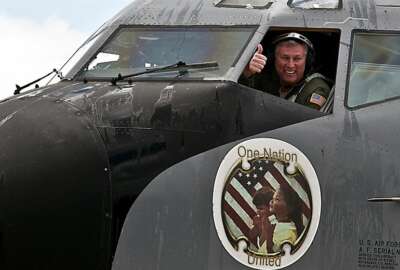It’s no secret that the Air Force is short on pilots. In fact at the end of 2018, the service was in need of about 2,000 pilots. However, a new study the Defense Department delivered to Congress sheds more light on the makeup of the shortage and the exact challenges the Air Force and DoD have in digging out of the hole.
The study tackles the pilot shortage from seven different angles including pilot quality of life, quality of service, what it would take to increase the pilot training pipeline and how feasible a “pilot-only career track” would be.
It says the Air Force and DoD are attacking the pilot issue from all angles, but it’s a long and expensive road ahead and even then it still seems to be a losing battle.
Requirements are high and training new pilots won’t do it alone
The Air Force is hurting for about 800 active duty pilots and 1,150 reserve pilots. The shortfall is most acute within the fighter community. An estimate from the RAND Corporation states the active duty pilot deficit will grow to 1,607 by 2023.
To keep the Air Force Major Commands staffed with pilots, the service needs 12,842 active duty pilots; 3,843 Air National Guard pilots and 3,684 reserve pilots in a steady state. That analysis does not include the 4,490 combat system officers; 2,017 battle managers; 3,304 drone pilots or the 14,908 enlisted airmen that keep the ecosystem afloat.
One thing the Air Force and DoD are competing with is the 30,000 pilots that will retire from commercial airlines by 2026, leading to a talent grab between industry and the military.
The hardest part is that pilots don’t just appear, they go through a process of undergraduate training, then formal training and finally being absorbed into operational squadrons.
“A balanced pilot production, absorption and sustainment system is critical to meeting pilot requirements,” the DoD report states. “The number of pilots produced at undergraduate pilot training (UPT) has to be able to flow to the formal training units (FTU) and then to an operational unit where they are ‘absorbed.’ There is no benefit to producing more pilots than can flow through the entire pipeline. Delays or breaks in training can undermine student learning and proficiency and frustrate the entire pipeline.”
In a perfect world, without any hiccups, UPT can take on 1,480 pilots a year. Due to flying constraints at the FTU, the Air Force sent 1,400 through UPT only once since 2007. All other years ranged between 1,350 and 1,100.
The Air Force is planning on exceeding 1,400 in 2020 because the Aircrew Crisis Task Force (ACTF) identified ways to “improve the quality and better align with absorption into FTUs,” the report states.
Bad news for the Air Force though: the report states “even that significant improvement won’t get the Air Force to its production requirements in the out years.”
The Air Force is still waiting for an analysis of what it would take to add 100 more people to the UPT pipeline.
Then there are the FTUs, which are significantly smaller. Right now the Air Force is producing 294 pilots a year through FTUs. ACTF suggested increasing the pipeline to 300, but that may be an issue.
“To achieve the increased production, multiple issues will need to be addressed, to include: increase fighter pilot staffing, increased funding for weapons system sustainment and additional aircraft for both training and absorption in operational squadrons,” the study states. “Due to current imbalances in the production pipeline, delays throughout the training phase from commissioning through absorption at operational units are further restricting the Air Force’s ability to meet fighter pilot requirements.”
It’s also important to remember that the Air Force spends a lot of money to train these pilots. Even if it could expand the pipeline, it would cost a lot of money.
A recent RAND study found the cost of training a basic qualified fighter pilot ranges from $5.6 million for an F-16 pilot to $10.9 million for an F-22 pilot.
The study found that retaining pilots is more efficient than training new ones even if the Air Force increased its yearly incentive pay to $100,000 per year of additional commitment to retain mid-career pilots.
Incentive pay is nowhere near that number and quality of life is pushing mid-career pilots to the commercial sector.
Quality of life and service
“Job dissatisfaction, career dissatisfaction, frequent and long deployments, poor quality of life, non-competitive pay and lack of personal and professional development are among the reasons cited for why many experienced military pilots separate from military service,” the DoD study states.
Pilots aren’t happy in the military and the packages the Air Force has to offer aren’t cutting it.
The study states that major airline hiring increased steadily from 2012 and during that timeframe the number of eligible Air Force pilots who took aviation bonuses decreased from 67% to 44%.
To the Air Force’s credit, it has tried to better quality of life and service. It gave pilots more flexibility it professional development pathways, eliminated non-essential training and cut operational and administrative requirements.
Still with all the changes, the service does not think its incentive bonus programs are competitive enough to satisfy pilots monetarily. The current cap is at $35,000 a year, but the Air Force thinks it needs to offer more to keep pilots in the service.
The 2020 defense authorization bill is due in Congress soon, some lawmakers may take up the Air Force’s cause and call for better incentives.
Copyright
© 2024 Federal News Network. All rights reserved. This website is not intended for users located within the European Economic Area.

